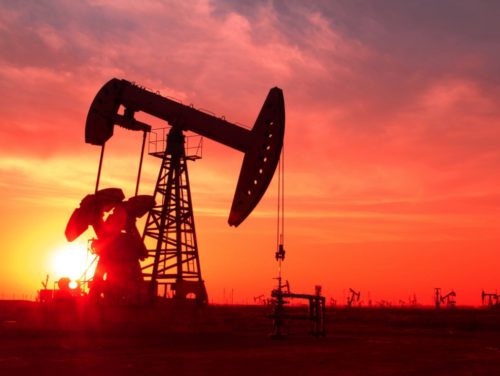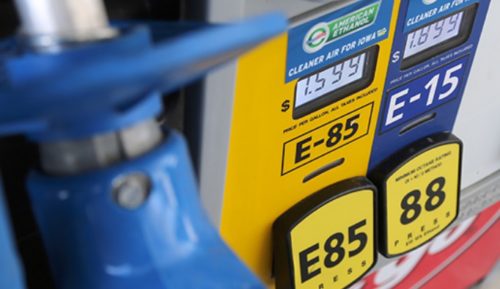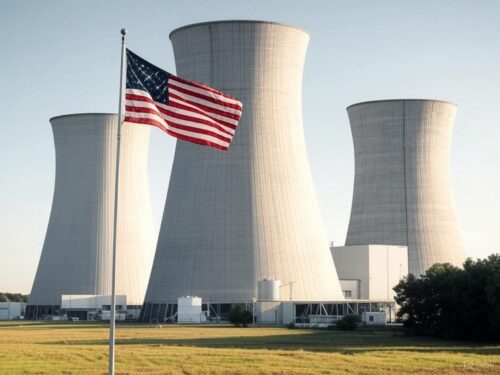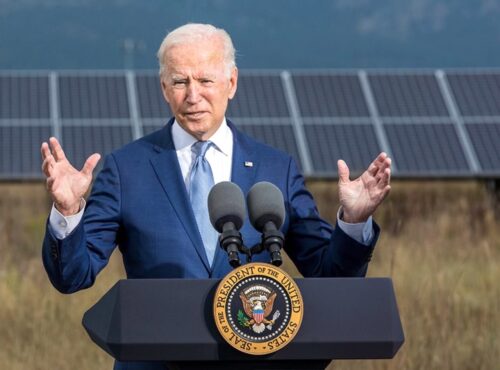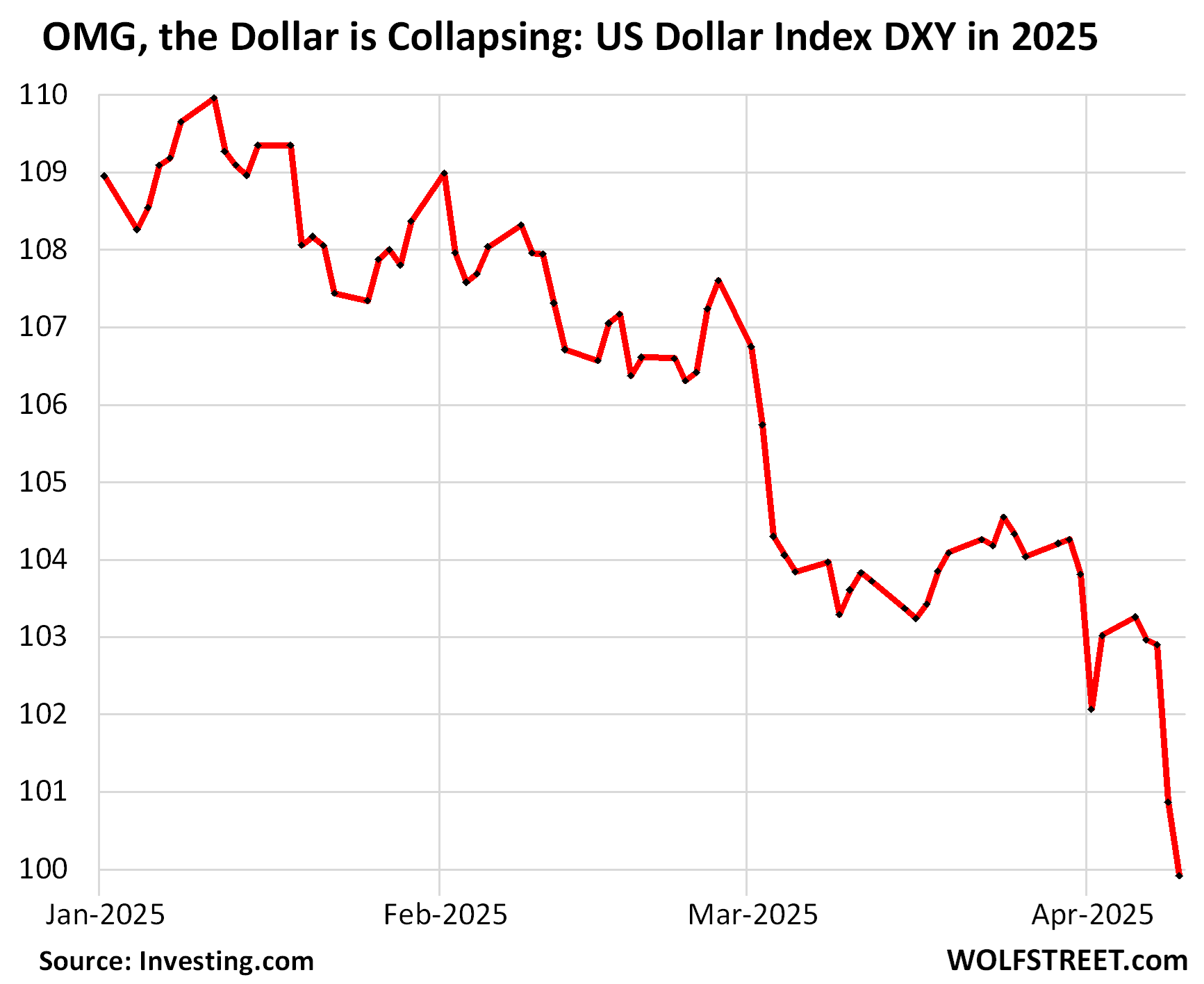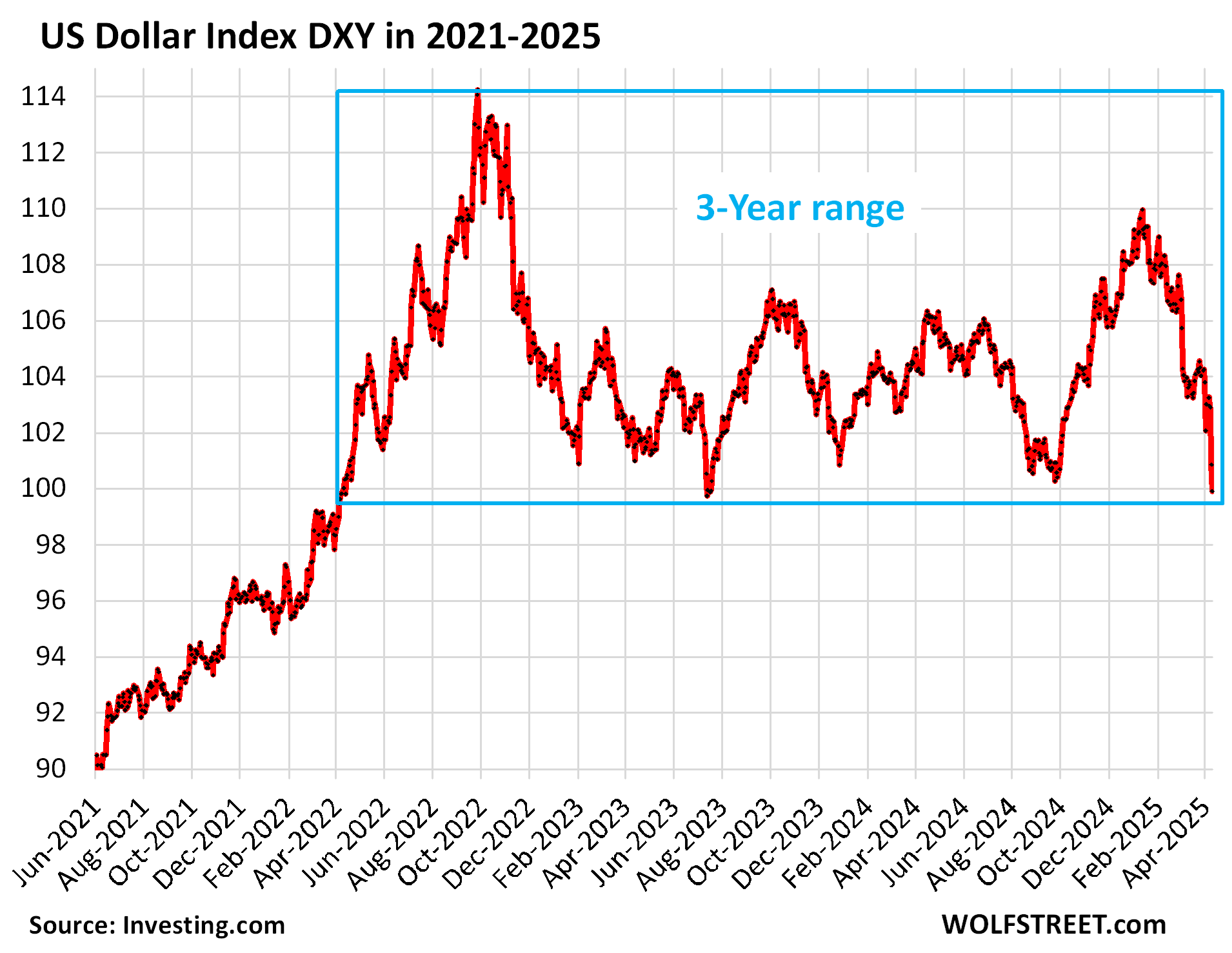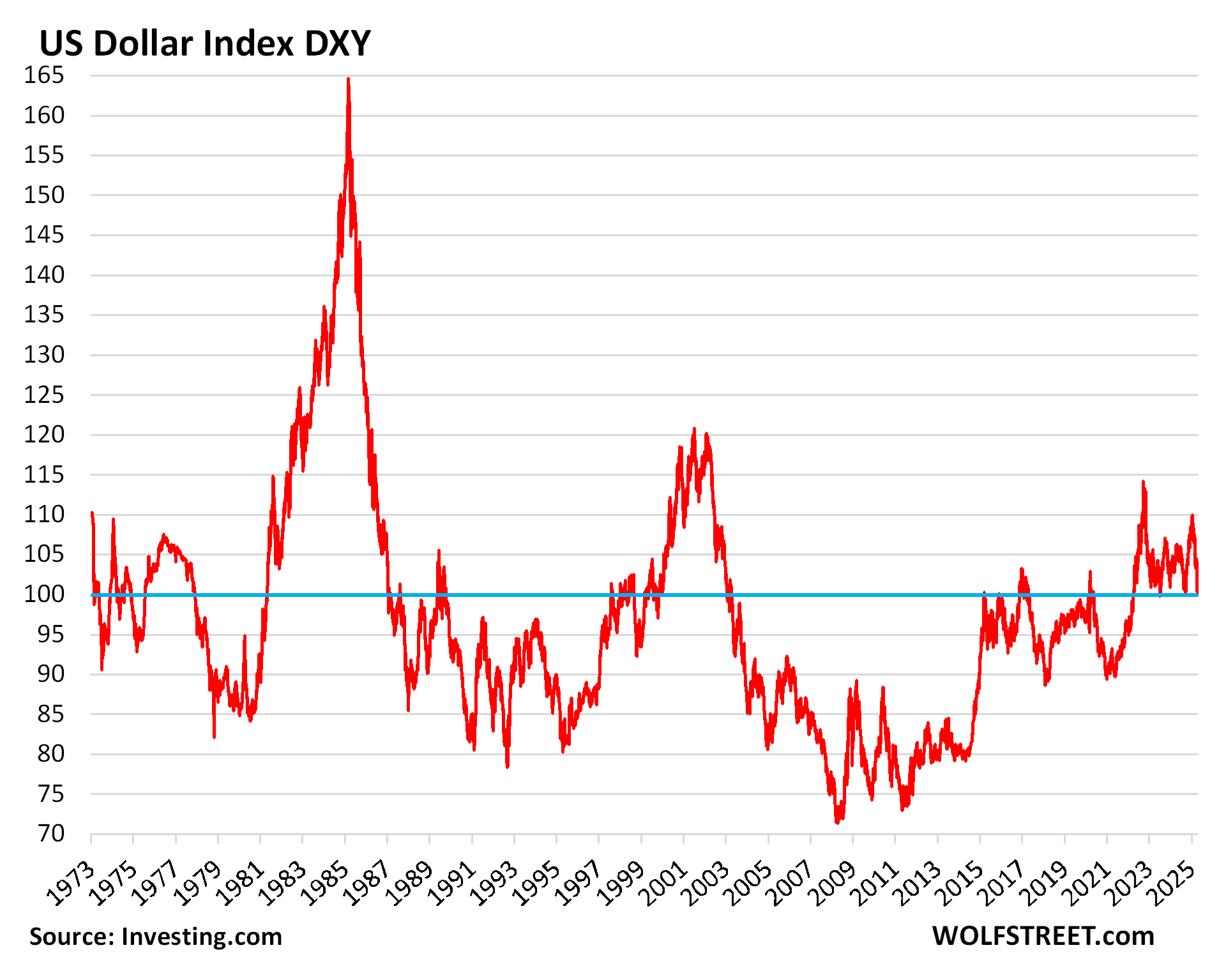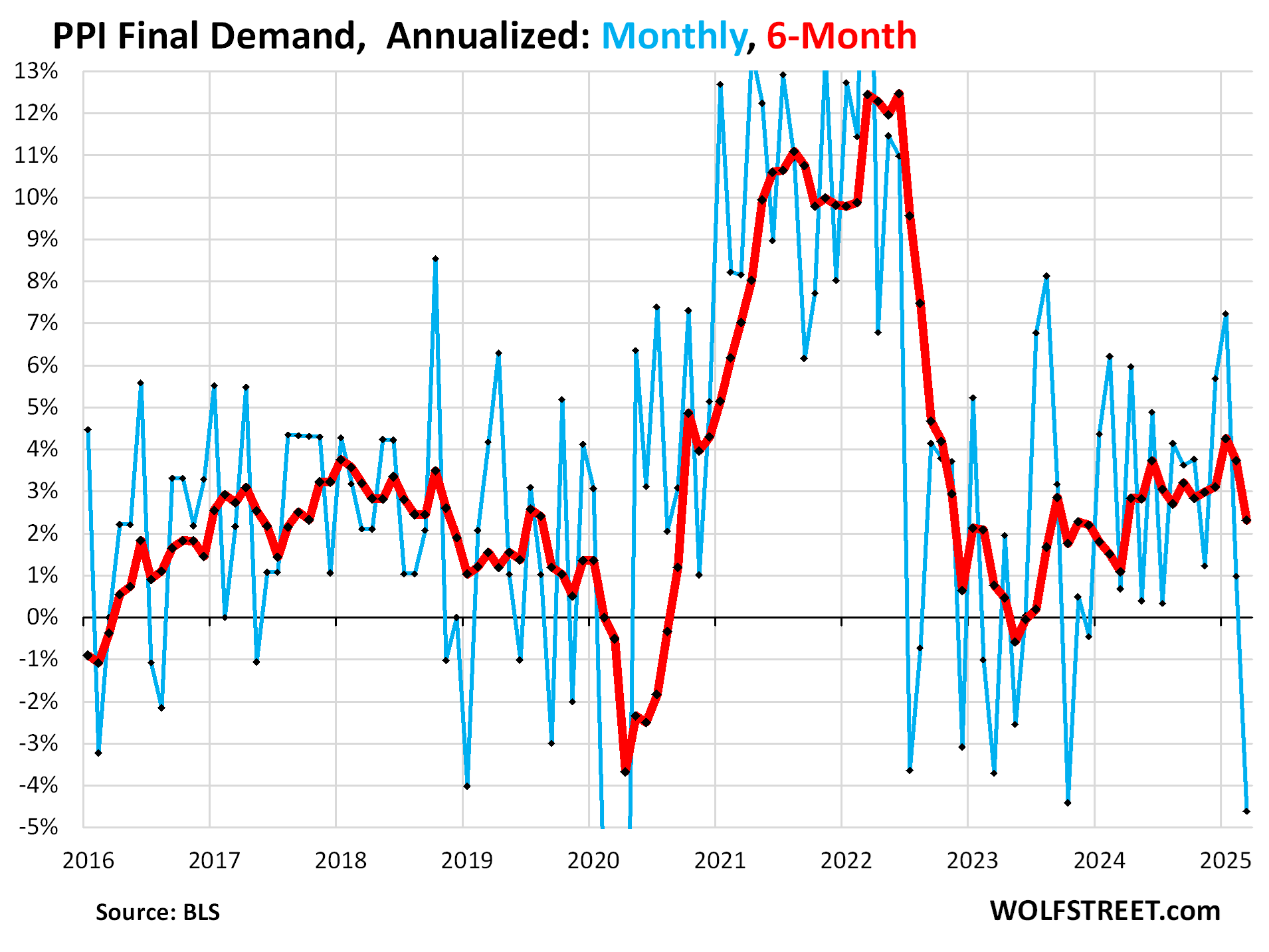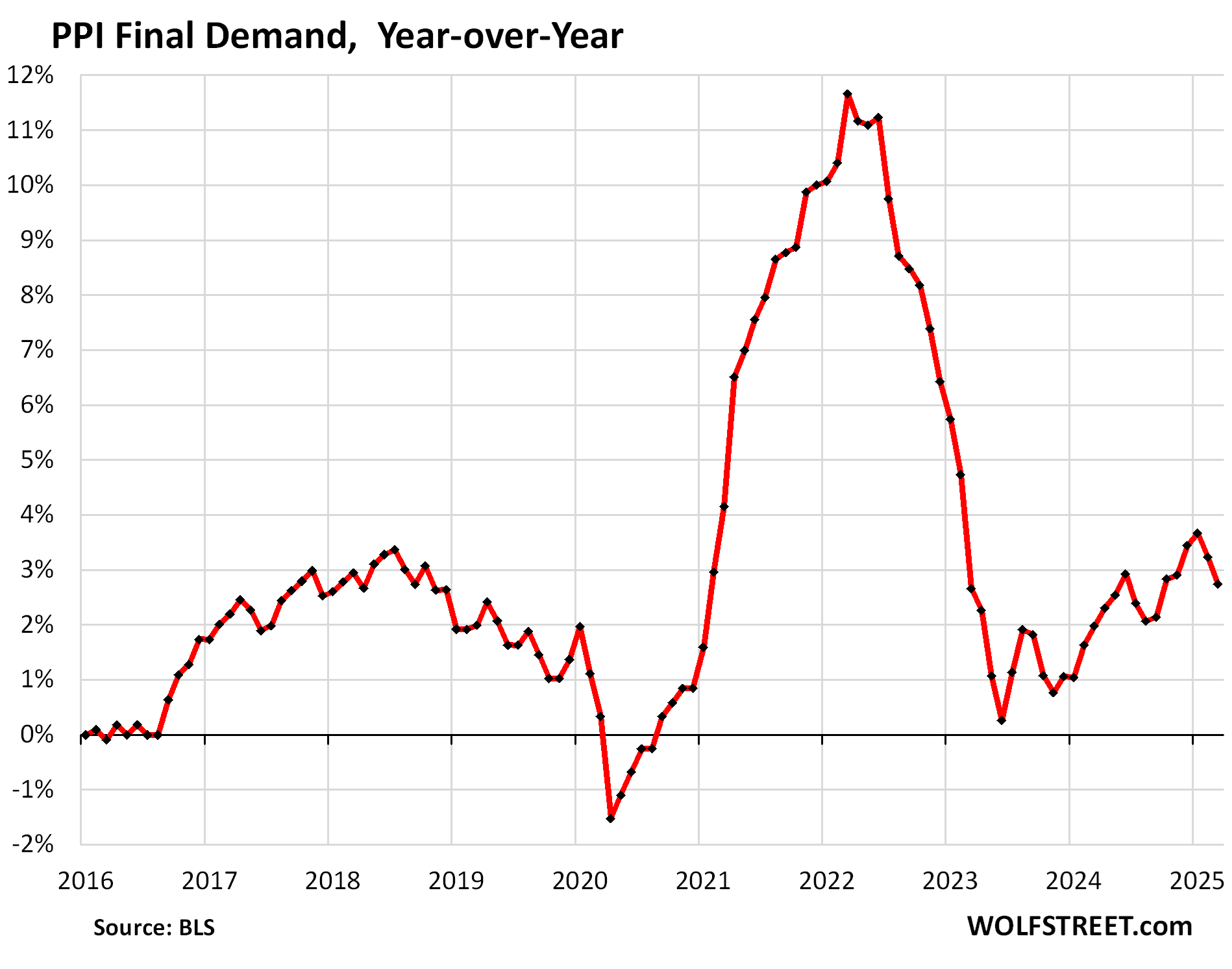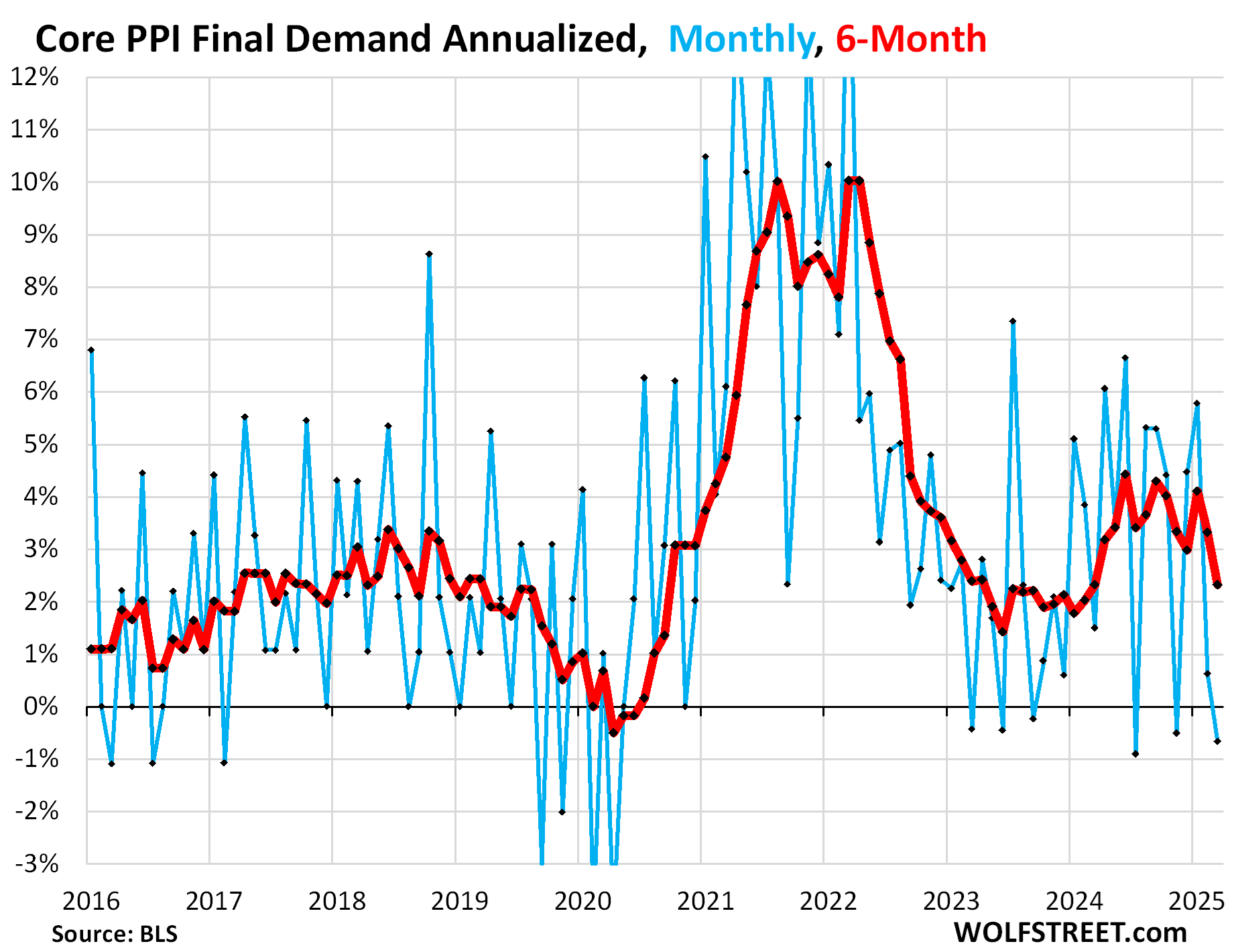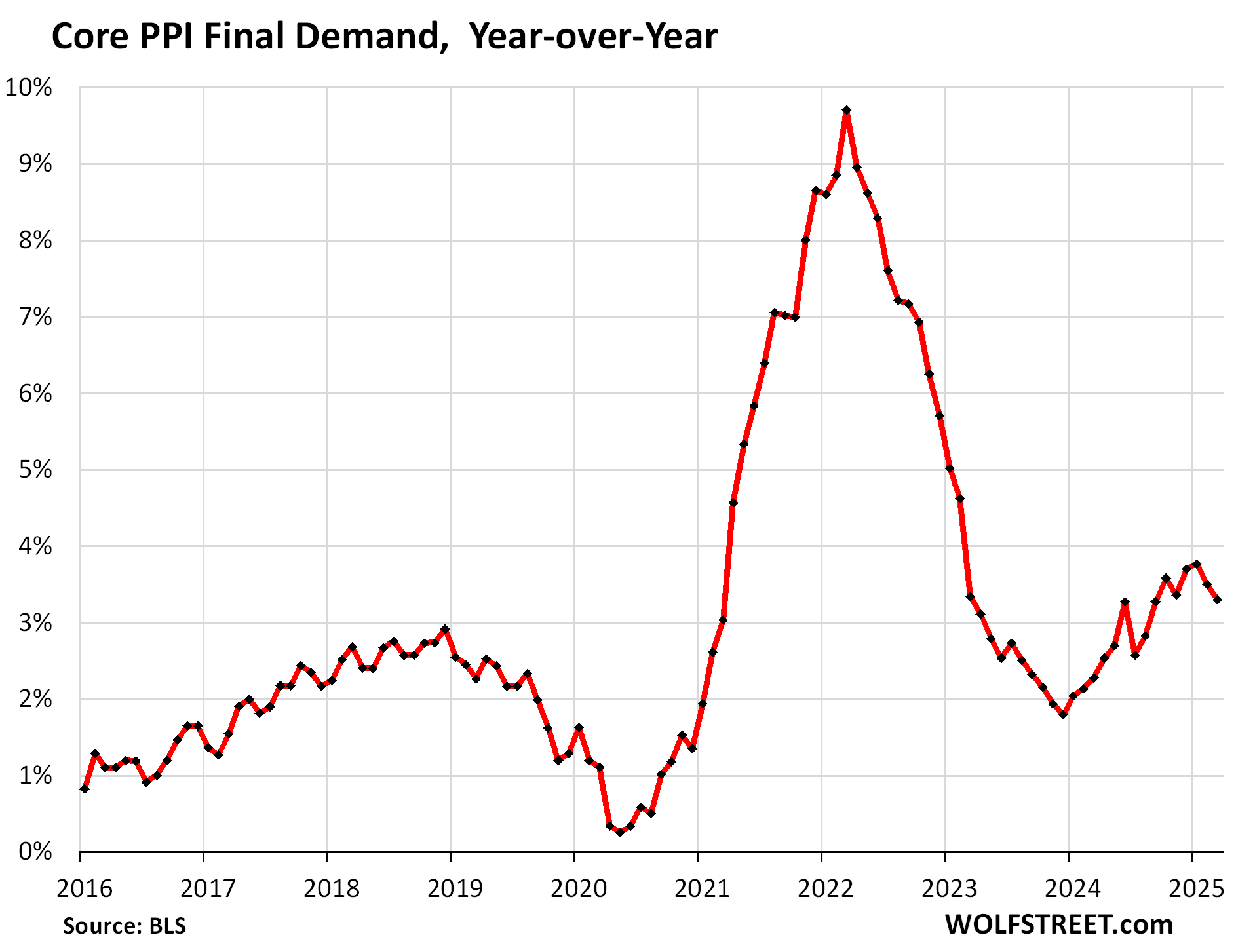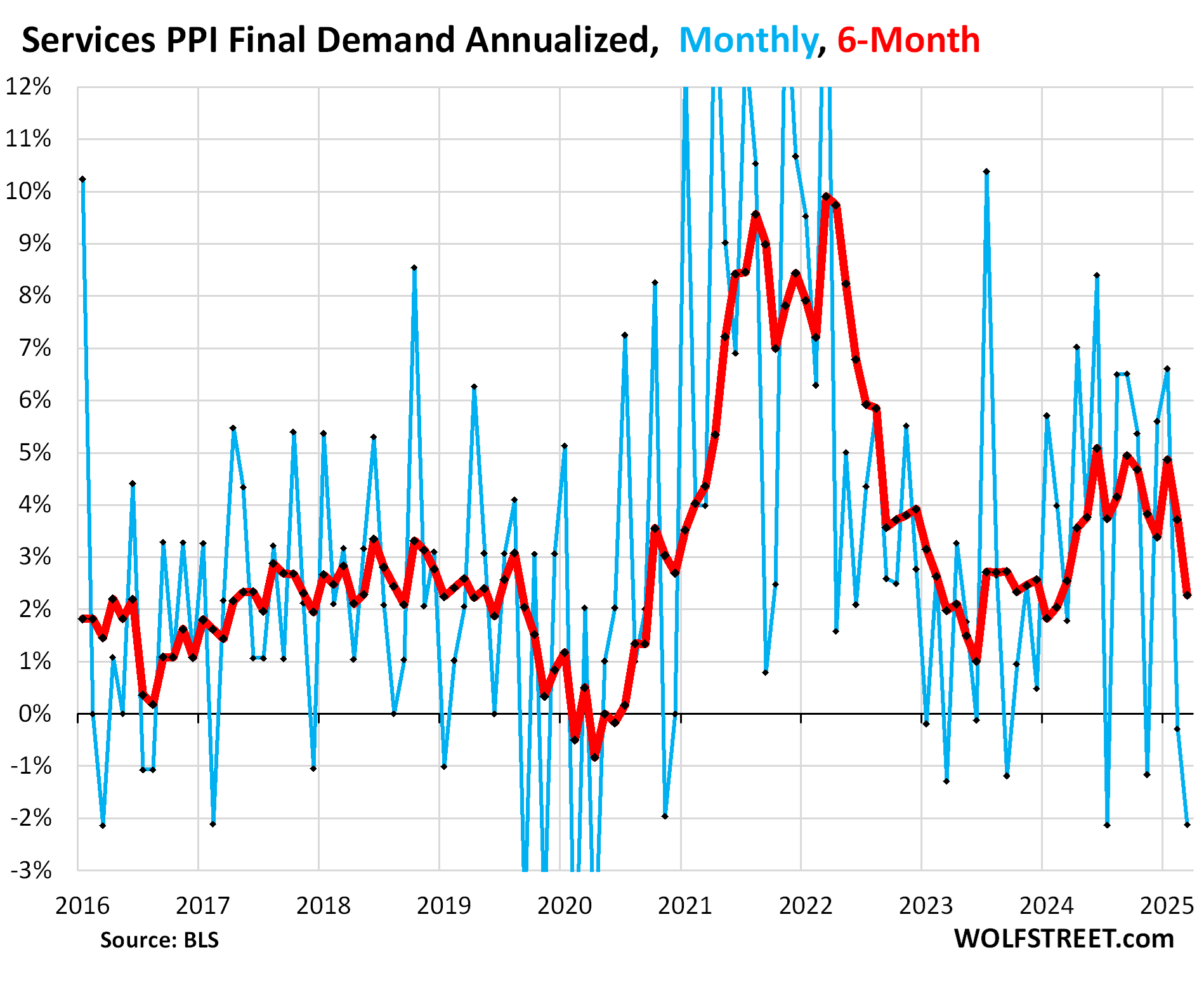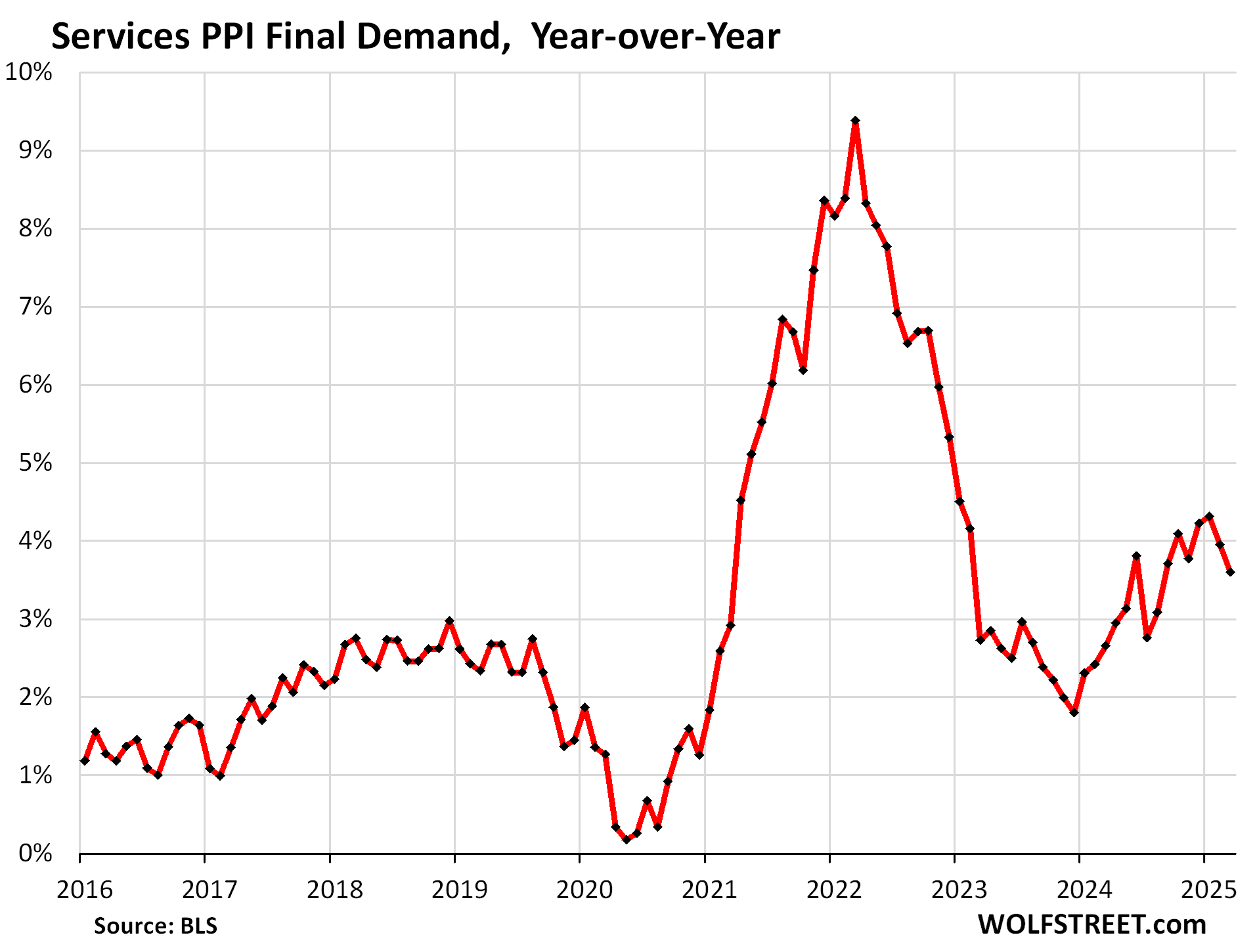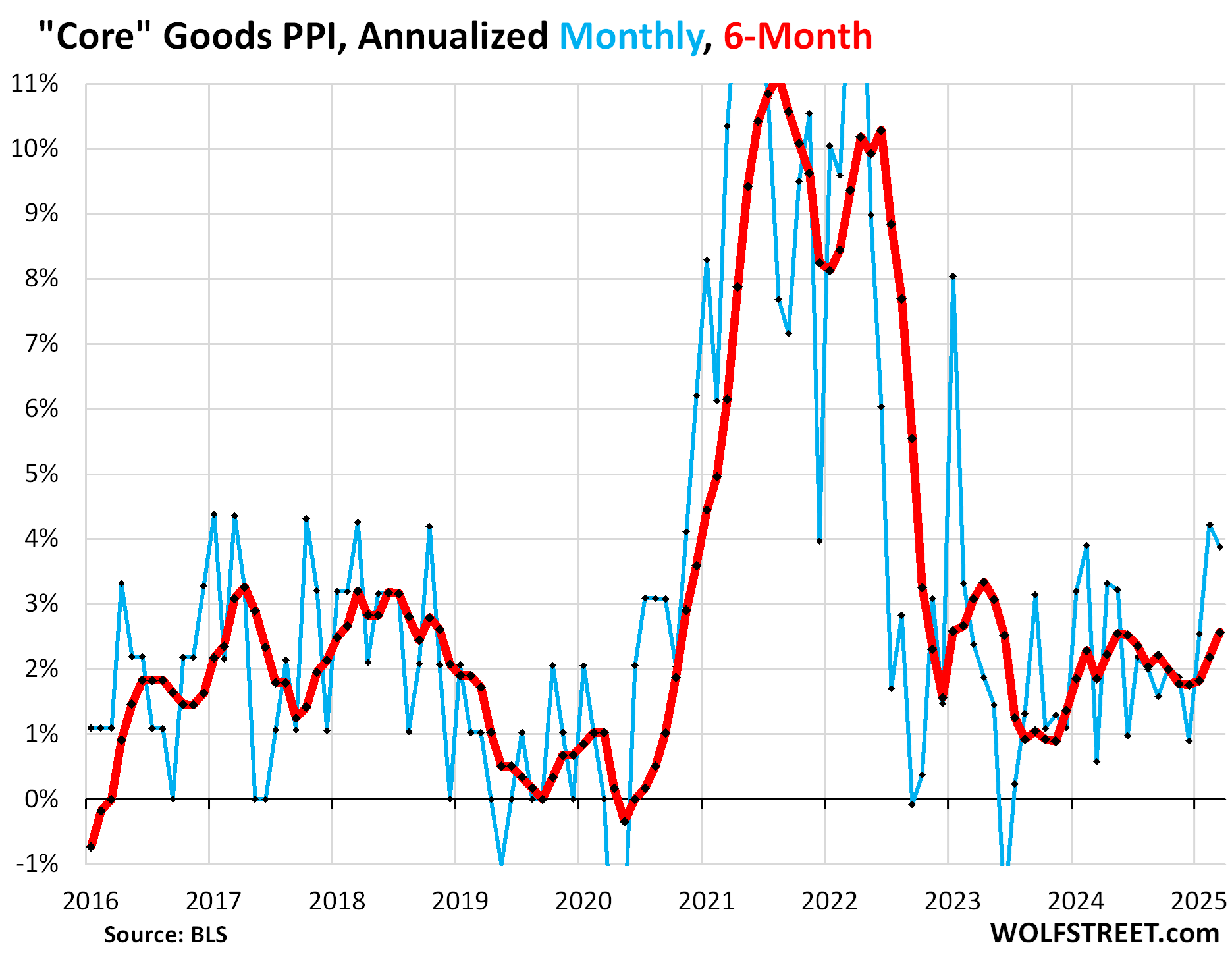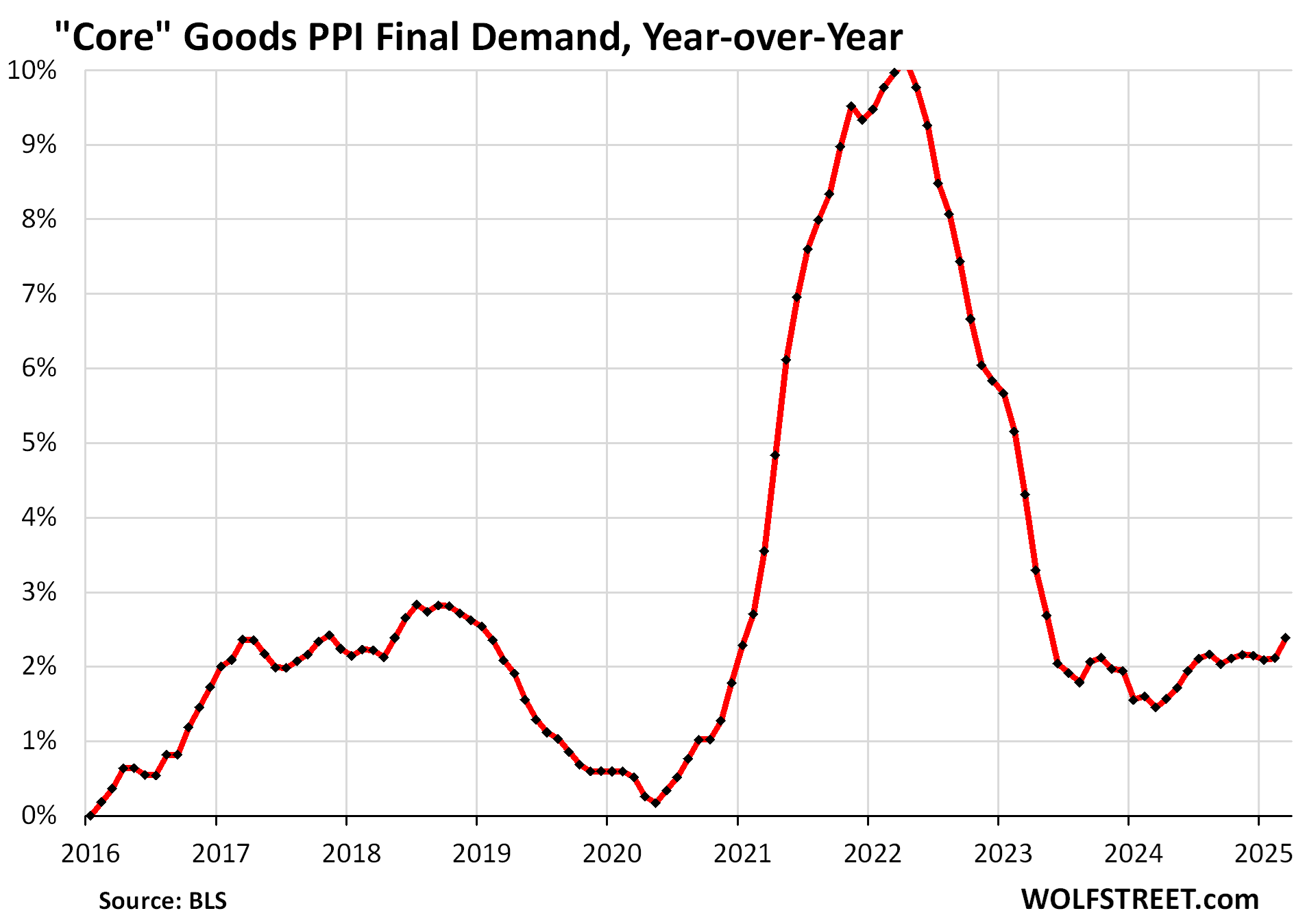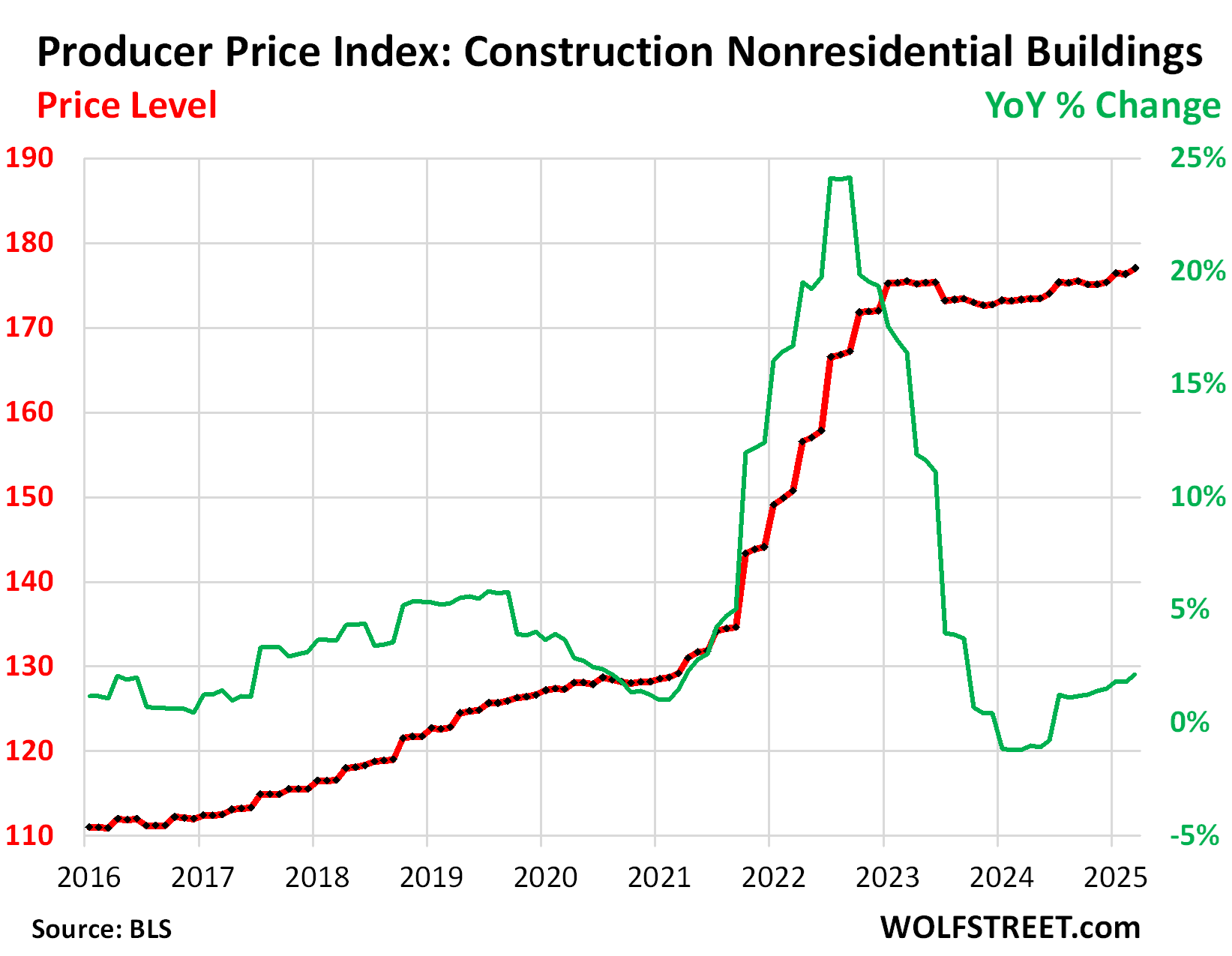Energy News Beat
Weekly Daily Standup Top Stories
Donald Trump’s imposition of new tariffs has triggered fears of a global trade war, with the UK facing a 10% tariff on all goods and potential economic stagnation. Economists and analysts are divided on the […]
President Donald Trump threatened to slap additional 50% import taxes on China, while readying negotiations with Japan and Israel, leaving markets struggling to grasp his intentions for his sweeping tariff plans. Stocks swung wildly on Monday as […]
ENB Publisher Note: This is an outstanding article from Ronald Stein. I have thoroughly enjoyed my podcast interviews with Ronald, and his expertise has always been well-received. He mentions Chris Wright, US Secretary of Energy, […]
President Donald Trump is preparing to sign executive orders Tuesday to bolster the coal industry, including using his emergency authority to force some coal-fired power plants set for closure to stay open and keep producing […]
Oil prices have crashed to their lowest point since 2021 due to the escalating US-China trade war. Analysts fear the trade war will lead to a global recession, significantly reducing oil demand. The oil price […]
Highlights of the Podcast
00:00 – Intro
02:19 – Trump Tariffs Threaten UK Economic Stability
07:51 – Trump Threatens 50% More China Tariffs, Teases Talks With Others
09:57 – South Africa needs all the products and transportation fuels that renewables cannot provide
13:14 – Trump to sign executive orders aimed at reviving coalHow does the steel market feel about Trump’s Tariffs?
16:09 – Oil Prices Drop to Lowest Level Since Pandemic as Trade War Accelerates
26:40 – Outro
Follow Stuart On LinkedIn and Twitter
Follow Michael On LinkedIn and Twitter
ENB Top News
Energy Dashboard
ENB Podcast
ENB Substack
ENB Trading Desk
Oil & Gas Investing
– Get in Contact With The Show –
Video Transcription edited for grammar. We disavow any errors unless they make us look better or smarter.
Michael Tanner: [00:00:00] So, I mean, you’ve talking about massive flips here. The rotation is crazy. Oil just went above $62. It’s now $61.92. Why the flip flop? And this is what just somebody who is, you know, follows the markets who I wouldn’t call myself a macro economist, but understanding the dynamics at play may be more than some. This flip flop seems to be short sighted. And so I guess the question is why and why make the pause? If this was just a two week play, I mean, what’s the end game here? Are we just going to keep going back and forth? [00:00:37][37.2]
Stuart Turley: [00:00:37] No, I, the end game is to get people to the table. That has always been the way president Trump has been working on this. And I, I think that he is doing it right. You take Italy, let’s take a look at four key points. First point, let’ s take a Look at India. India, if it is, it’s really in there. [00:00:56][19.1]
Stuart Turley: [00:01:04] Hello, everybody. Welcome to the Energy Newsbeat Daily Standup. This is the weekly recap, Saturday, April 12th. I hope you have an absolutely wonderful weekend out there. Hope you’re enjoying the markets and the oil ride. Welcome President Trump. I’ll tell you what, buckle up. We’ve had a wild week on the news desk. Everything from tariffs are on, tariffs are off, to oil prices shooting back up. We had folks in the oil field that were really worried about their jobs to suddenly. Rigs are okay again. What a time to be alive and make coal great again and make coal clean. But you know what? Let’s have an absolutely wonderful day and more importantly, be nice to somebody out there. Read this story to your pets. And again, we thank you everyone to all of our subscribers. We appreciate truly everyone. We are on track for 15 million transcripts read this year of the Energy Newsbeat podcast. We’re on track to be over 2 million listens on Spotify and Apple. So again, thank you to everyone that is listening and supporting the show. Have an absolutely wonderful day. [00:02:17][73.7]
Michael Tanner: [00:02:19] Tariffs threatening the u k and world economic stability this is you know me what everyone’s talking about it newsflash you’re living under rock Tariffs are here and they’ve absolutely crushed the economy. There’s a whole swath of tariffs. You know, by now all we’ve seen the image of Trump holding up the sign, which basically says here’s what tariffs countries have on us versus what tariffs we have on it. It’s really feared and triggered this potential global war specifically with a lot of our allies. I mean, this, this article that we’re talking about specifically calls out the United Kingdom, which is facing a 10% tariff on all goods and Services pumped in and and a you know, like with with all things you’ve got, you know Economists and analysts are really divided on onto the extent that tariffs, you what tariffs are gonna do There’s really a bunch of schools. I’ll try to kind of lay out the the rationale for here. Well, one is that we need to reciprocate. We need to be strong. I think this is probably the outward message that the Trump administration is giving is we need to be stronger. Someone’s going to have a 25% tariff on us. We’re going to need 25% tariff. On us. It’s a way to raise revenues in the United States without necessarily increasing baseline taxes on folks, which You know, the argument against that is that obviously a tariff is a tax. But beside the point, that’s option one, option two, and, and this is where it’s not as outwardly shown, but you know, underlying maybe second reason why these tariffs are coming down the way they are has to do everything with everything to do with lowering bond yields and basically we have 19 trillion of debt that needs to be refinanced in the next 18 months. We would like to do that at a much lower interest rate, try to save ourselves some money in the era of Doge. Why not try to see if we can save some money? One of our biggest expenses is interest expense behind, obviously, Social Security and defense spending. Interest on the national debt is big. It’s like over a trillion dollars. Maybe we can refinance some of this. get that number down. Now, the problem is they’re not coming out and saying that. I mean, if that’s the reason, I mean I’m okay with that, I guess. Now, are there other ways to go about it? Maybe, maybe don’t rack up debt in the first place, but you’re kind of dealt the cards you have and you gotta play with that hand. So if that the reason why aren’t they coming out and saying? And that just all comes back to my overall philosophy is you shoot people straight. People should just, just help. don’t hide things. People are smart. U.S. people are smart, they’ll understand this. Most people don’t actually have stocks. Yes, they have a 401k, so they are exposed to the market, but tariffs in their mind lead to taxes. So if you’re going to increase prices at home because of tariffs, which again is fine, you should probably be honest about why you’re doing that. And in the long run, this will be helpful. And you know, I’m the first, I have no idea what the outcome of tariffs are going to be. You listen to CNBC, Jim Cramer, they’re losing their minds right now because, again, everything just goes onto the stock market. You look at the S&P 500 chart, if it’s not pointing up and to the right, that’s not good. If it’s pointing down and to the right new, that’s really, really not good, so I think from that standpoint, I think you’ve got a lot of people that are that are nervous about what’s going to happen, you know, obviously, if you listen to stuff coming out of, you know the Trump administration could be great, but I think the easiest thing to say is, I don’t know how these tariffs are going to play out. Now, what this article does go over is specifically the United Kingdom’s approach to what’s going to happen. But what you’re seeing is these finance ministers, specifically in the UK, are fairly concerned in the fact that they believe that this is going to cost them tens of thousands of jobs, you know, obviously. This is going to bring other countries to the negotiating table. And, and so I guess the real question that remains to be seen is, okay, what then exactly is that negotiation going to look like? Because, okay. Great. You’ve now driven stocks to this point. I mean, we’re, you know, we’ll under 5,000 now on, on, on the S and P 500 futures. You know, it’s, I don’t really know what the outcome is going to be, but really what this article does is just, is just dive in specifically to the United Kingdom and stuff. You know, recommend, you know, reading it. They definitely say that there is a retaliation that they’re, that they are planning. The question is, is a, retaliation better, or should they come to the negotiating table and really when, where the headache in lies is with, you know, the bank of England and we, with the federal reserve specifically talking about that stuff, you know, basically that, you know, this basically the quote in the article is this, you know, bank of England is going to face a dilemma on one hand, tariffs are going to lift prices of some of the goods. And it’s core remit to keep a lid on inflation as close to 2% as possible, to which point rates staying higher for longer is most likely going to happen. You know, basically most economists think that what’s going to happen in England is that they’re going to go ahead and do an interest rate cut mainly because that’s what they’ve signaled to the market. They’re going do. So this could be a reversal. And, and, and so, which again is, is it’s, it’s what in times like this is what you should do now. This is the other part is quantitative easing, all the stuff that got us in, in the 2008 mass, do we want to repeat that? Should we actually let the economy roll over? Who knows? But great article here. [00:07:50][330.5]
Stuart Turley: [00:07:51] Trump’s threat. threatens 50% more tariffs and teases talks with others. understanding that the rest of the world has been terrifying the United States and has trade blocks against the United states for even trying to do anything. We’ve lost 90,000 factories in the United States. Try to put a pin on all of those and you’ll understand what President Trump is trying to. He’s trying to bring manufacturing back. So let’s all take a deep breath. Let’s take a listen to some of these discussion points. If China does not withdraw its 34% increase above their already long-term abusing by tomorrow, April 8th, 2025, the United States will impose additional tariffs of China 50% April 9th. Now, as of this morning, China’s economy stock market went down 10%. They are hurting. And when you take a look of them going, Ooh, we’re going to tariff the United state, they don’t buy anything from the United States, because they have already stripped out most of our manufacturing. So it’s really a one sided argument here. And this is kind of like OSU trying to beat up its big brother, OU, and that kind of a thing. It’s just not going to happen. 50% charge would come on top of the 34% the president posed on all Chinese imports. Now we’re talking some serious bucks and this is going to shut down the entire Chinese market. They are not in a very good situation. The message is simple. For those who are ready to take a seat at the negotiating table and recognize they will no longer be able to mistreat America, please come and join us. Listen to what he just said. This is simply a negotiation to get everybody to the big boy table. Pull your big boy pants on and let’s start treating the United States like we need to be treated. And I’m all in on this. [00:09:56][125.4]
Stuart Turley: [00:09:57] South Africa needs all of the products and transportation fuels that renewables cannot provide. This article is from Ronald Stein, a great friend of the show, and I consider him a friend. He is an author and I’ve had him on the podcast two or three times and he is absolutely a real, I consider an actual treasure. And when you sit back and take a look, oil and foundational to the global economy, contributing thousands of products and the estimated 6,000 products that underpin modern living standards. And these fossil fuels are driven economic by providing energy and raw materials for industry, transportation, manufacturing, while all their derivatives permeate everyday life. Now he mentions in this story, Chris Wright, and also in executive chairman of the African energy chamber and Chris is the U S secretary of energy. I have interviewed both of them. And so all three men have been on my podcast more than two or three times. So each one of them are fantastic energy leaders and I truly appreciate all of their time. And when you sit back and take a look at this particular group, then I’d love to have all of them on a podcast together. That to me would be just out of the park cool. Today, we have more than 50,000 merchant ships, more than 20,000 commercial aircraft and more than 50000 military aircraft that use fuels manufactured from fruit oil. The IEA oil market, March 25th, forecast global oil demand reaching 103 million barrels per day, up 1 million from 2024. We have not reached peak oil yet. US Energy Chris Wright affirmed that Africa must be free. To harness its vast energy sources without interference and NJ and executive chairman says secretary’s right message is long overdue of recognition. The African needs investment, not indifferent. In fact, NJ takes it one step further. NJ has said on my podcast, he says, please let’s not have any more handouts. Let’s build low cost energy. Let’s electrify things. Let’s. let us build products and become great trading partners. Secretary, right? And in our case, why don’t we export our great technologies of building the power plants and using energy as a service and getting that in there so that we can help build their electrical facilities and oh, energy as a surface. I believe that you have talked to your president about this and possibly taking over the… Russian nuclear energy plant as a service. So if we did something like this, this could transform energy as we know it going forward and having long-term trading partners. I would rather have Africa building products Africa for Africans first and then having them trade with United States for finished products and then we could help them get them and we would have an actually a great trading partner. [00:13:13][196.5]
Stuart Turley: [00:13:14] President Trump to sign executive orders, film that reviving coal as he’s going through this, this is at 3pm on on the White House, which is according to Trump wrote in a truth social post after years of being held captive by environmental extremists, lunatics, radicals, thugs and other countries. and popular China to gain tremendous economic advantage over us by opening up hundreds of coal fire power plants. I’m authorizing my administration to immediately beginning producing beautiful, clean coal. Well done, president Trump. During your announcement, I got to hand it to you. You not only had all of the coal men standing behind you. You also introduced Chris Wright. Doug Burgum and Lee Zeldin, you got a trio of classy, classy men that can get out there and get this job done because clean coal will help stabilize the grid and we need that very badly. And so again, well done, congratulations and great job. Let’s go to the next story here. U S nuclear is critical and Maria Barcaromo interviews points out some critical issues. Lee Robinson is the founding member of a general matter in East stop by the Fox newscast. I found this very interesting. The bullet points were the U S currently lacks domestic supply chain for its enriched uranium, leading to dependence on foreign suppliers. Holy smokes, Batman, we’ve got to buy our own uranium back from Russia, which if you know how that happened, this possesses a significant security risk and the US may run out of enriched uranium for its nuclear power fleet and military assets by the 2040s. Holy smokes Batman, We have approximately 95 reactors. And there is even a more, a bigger kind of reactor that we’re going to need. All of the new reactors coming online are going to be the next gen and they’re going to a very high end fuel in order to be done. China is rapidly expanding its enrichment capabilities, posing a competitive threat to the United States. We must take and wholeheartedly. I firmly believe that this is a great thing that again, it appears that That president Trump and his entire team is actually running on all cylinders with the exception of the Ukraine, uh, peace accords, which you’ve heard me say he needs some more information and more help with his team that isn’t leading that one and president Trump, if you’re listening to this podcast. Reach out to me, I’ll tell you who. [00:16:08][174.2]
Stuart Turley: [00:16:09] This is such a crazy time right now about oil and gas. I had to call Michael while he is on vacation visiting with some flounders down there in Mexico. Michael, hey, I want your opinion on what the hell’s going on in oil and guess here, buddy. I was. [00:16:22][13.1]
Michael Tanner: [00:16:22] planning on taking a few days off. We had even I announced it on my solo show on Sunday. I said, hey, I got to take a few days off in Mexico and then holy smokes oil actions down to fifty five dollars. And then about 15 minutes ago, Trump decided, you know, as we record this about 1 p.m. Central time, Trump comes out and says it’s pause on all Paris oils now 60 at sixty one eighty eight. Probably by the time you listen to this will be over 62. Absolutely unbelievable. So I said, Stu, I’m going to come on, pop in, and we got to talk about what in the heck is going on in the oil and gas markets right now. [00:16:57][34.7]
Stuart Turley: [00:16:57] Well, let’s let’s tee this up. President Trump’s tariffs have been paused for the 70 countries or basically everybody, but China, China. He’s going to 124% on their tariffs. And I applaud his move because he says they have been stealing from the United States. They’ve been doing things. I called it right. Also on Panama canal, Panama canal Pete, our secretary of defense is there. We’ve got lots of Marines in there patrolling the skies. They’ve got more airplanes in there. China is now waking up realizing going holy smokes Batman. The dollar Michael is the highest between the Chinese Yuan and since 2007. There’s a lot going on right now and let’s talk about OPEC plus and their cuts and then how that kind of fans out. Goldman Sachs in this that we want to talk about, Michael, is from Irina Slav. oil prices dropped to the lowest since pandemic as trade war accelerates. Goldman Sachs analysts, which we, you and I joke about, you, and I will never be hired by Goldman Sach’s. [00:18:05][67.3]
Michael Tanner: [00:18:05] We’re not bullish enough, we’re not bullish enough. [00:18:07][1.9]
Stuart Turley: [00:18:08] 2026 forecast by $4 to 58 bucks for Brent and 55 for the benchmark. And I don’t agree with that at all. So let me hear your thoughts. [00:18:19][10.2]
Michael Tanner: [00:18:19] I think there’s, there’s a couple of things here. I mean, obviously with, you know, there there’s obviously, as I talked about on Saturday there or Sunday, when I recorded my solo show that the episode that dropped on Monday, you know, I laid out the case of there’s really two things drive in the market. Ultimately, what’s driving the market is a future forecasted demand that is much, much lower than expected. Everybody is revising demand numbers down. We saw the EIA, the IEA come out. API has all said, OPEC has come out, we said to expect lower demand. And what’s driving that is twofold. One obviously is tariffs, but not because of the reason why I think people think so. It’s not just that there’s tariffs. It’s that people believe that these tariffs are going to lead to a recession and that a recession, people drive less. They travel less. They don’t get to come to Mexico, which I’m talking about a crazy time to be on vacation right now, but I’m getting lit up left and right. I don’t feel like I’m on vacation, but at least I can take my phone calls looking at the beach. But so it’s because the tariffs theoretically are gonna cause a recession, which is why everybody was kind of freaking out at this point. But then the real second driver was the fact that OPEC has decided to add in even more barrels. And that was kind the nail in the coffin of this really bleak demand side to the equation. It’s not a supply issue, it’s a demand side. Their supply is relatively in line with where I think everybody expected it to be, but it’s the fact that there’s cratering future demand or theoretically cratering, future demand that I think is forcing the hands in. Really what I wanna hear from you is because obviously pump came out, we had a whole show lined up, I was gonna pop on and it was gonna be a little bit of a funeral. We are gonna have a quick moment of silence for oil and gas producers. We’re not quite. [00:20:09][110.0]
Stuart Turley: [00:20:09] We’re not quite dead yet. [00:20:09][0.8]
Michael Tanner: [00:20:10] Well, yeah, exactly. It’s a little this is a little bit of Princess Friday. He’s mostly dead. They’re mostly dead, mostly dead is now coming in and reverse this tariff. And, you know, we run down the gamut here. S&P 500 is up seven point eight percentage points. Nasdaq’s up over seven and a half. The two year yields is up six point two percentage points. So, I mean, you’ve talked about massive flips here. The rotation is crazy. Oil just went above sixty two dollars. It’s not sixty one ninety two. why the change, why the flip-flop? And this is what just somebody who is, you know, follows the markets, who I wouldn’t call myself a macro economist, but understanding the dynamics at play maybe more than some, this flip- flop seems to be short-sighted. And so I guess the question is, why? And why make the pause? If this was just a two week play, I mean, what’s the end game here? Are we just going to keep going back and forth? [00:21:09][59.2]
Stuart Turley: [00:21:09] No, the end game is to get people to the table. That has always been the way President Trump has been working on this. And I think that he is doing it right. You take Italy. Let’s take a look at four key points. First point, let’s take look at India. India, if it’s really in this, they have already got a team coming to the United States to talk about trade barriers and things like that. Boom, India is critical in the price of global oil because they are going to be the largest importer of oil around the world. Boom, they’re off the table. They are coming in to trade. China. China is on the table at a 124% tariff. This is going to kill their economy. If China, and I had written this this week, Michael, if China remained stable, if they just remained stable, we would still see $75 to $80 oil just with those two things right there. because you nailed it in a recession people don’t travel or anything else but when you take a look at the number one world importer India is starting to boom you take a look at China the number-one manufacturing one is now starting to waffle if India can then take in more and and kind of counterbalance this out we will see the $70 oil and the $80 oil. And here’s why, because we still need $4 trillion dollars of investment to meet decline curves. So if you just kind of get a general, I don’t want to use the word Moab or mother of all bombs close to the target, that would usually gets what the job done is. And I’m going to get kind of close. And that is if we get and avoid a global recession of these. These tariffs are right sizing trade. This is going to be a short-lived issue with the exception of China. Bookmark this podcast. You will see China fold by the end of the month. How they fold? I’m still working on that one. [00:23:24][134.9]
Michael Tanner: [00:23:24] Yeah, I mean, it’s it’s really crazy prices now from the oil side. We’re sitting at at sixty one fifty now. So we’re you know, you spike up to sixty two. We fall down and it’s wild up there. [00:23:36][11.4]
Stuart Turley: [00:23:36] I got two more things. The last two pieces of this critical puzzle is NATO and the EU, and I’m throwing in the UK in there with that as well. We could see the end of the EU as we know it now. This is absolutely critical because the EU was advertised and started out as a trade association. Holy smokes. guess what this is doing? All countries are coming to the United States and saying we want to start trading. All of a sudden, they’re all mad at China. They’re all coming around the corner. And I think this is not going to be a global recession. This is a global right sizing. But NATO is in trouble, NATO, and there’s already a big rift going on. There’s a lot of geopolitical stuff in here. And I feel sorry for the poor folks in the UK. The UK Brexit may be over and they may be joining a sinking ship jumping and they maybe the first rats back into the sinking EU. Go figure this one out, but I wouldn’t want to be in the U.K. [00:24:44][68.0]
Michael Tanner: [00:24:44] No, markets are absolutely wild right now. What a week, to be honest. It’s been an absolute, absolute rollercoaster. But but yeah, so Edna Swivel, you know, I mean, the talk of the town yesterday in the oil business was shut the rigs down. You know, there’s a quote from Brian Sheffield, who’s CEO over for Formentera Partners. Obviously, the famous son of Scott Sheffeld, who said his quote was it’s a bloodbath right now and, you know, they’re winding down rigs. You know this does come back to the you know. you’re in the oil and gas business you can’t you have to make sure the underwriting that you do is solid because if you don’t now all of a sudden at 55 you may not have needed a rig but now at 61 you’re like maybe I do if that swing is causing you to change your investment and your go forward drill plant you’re a big big problem so this is a this is when you need to if an oil company, you need to make sure that your underwriting mechanics can withstand these type of price swings because you don’t want to be panicking right now. Yes, we love prices to be $80. Don’t get me wrong. But if oil going to $55, it constrains you. Maybe you shouldn’t have been drilling at $65. Maybe, you know, you have to make sure that, and obviously there’s a threshold at which you throw your under writing metrics, because if oil is $75 and you’re underwriting at $40, you’re not going to find much that’s But it’s making sure it’s one of the things that PECOS that we’re really good at, Stu, is part of the reason why we focus on shallow vertical conventional drilling is that it’s you’re less beholden to today’s oil price and more dependent on the longer term price of oil because we don’t get the huge IPs. We just get long, long term production. And under that scope, yeah, oil will definitely, you know, it’s going to cut up, but it’s going to rise eventually. like it’s. Absolutely so. [00:24:44][0.0][1468.1]
The post Week Recap: Trade War and Tariffs Impact Global Markets, Cause Oil Prices to Plummet appeared first on Energy News Beat.






